Take a moment to imagine that perfect, warm bowl of stewed potatoes on a chilly day. It’s a dish that calls to mind comfort, home, and hearty nutrition all at once. Stewed potatoes are not just food; they symbolize warmth and togetherness. This guide will explore how to make stewed potatoes, the best types to use, and what pairs beautifully with them. Therefore, if you are looking for valuable insights and tips for cooking stewed potatoes, you are in the right place!
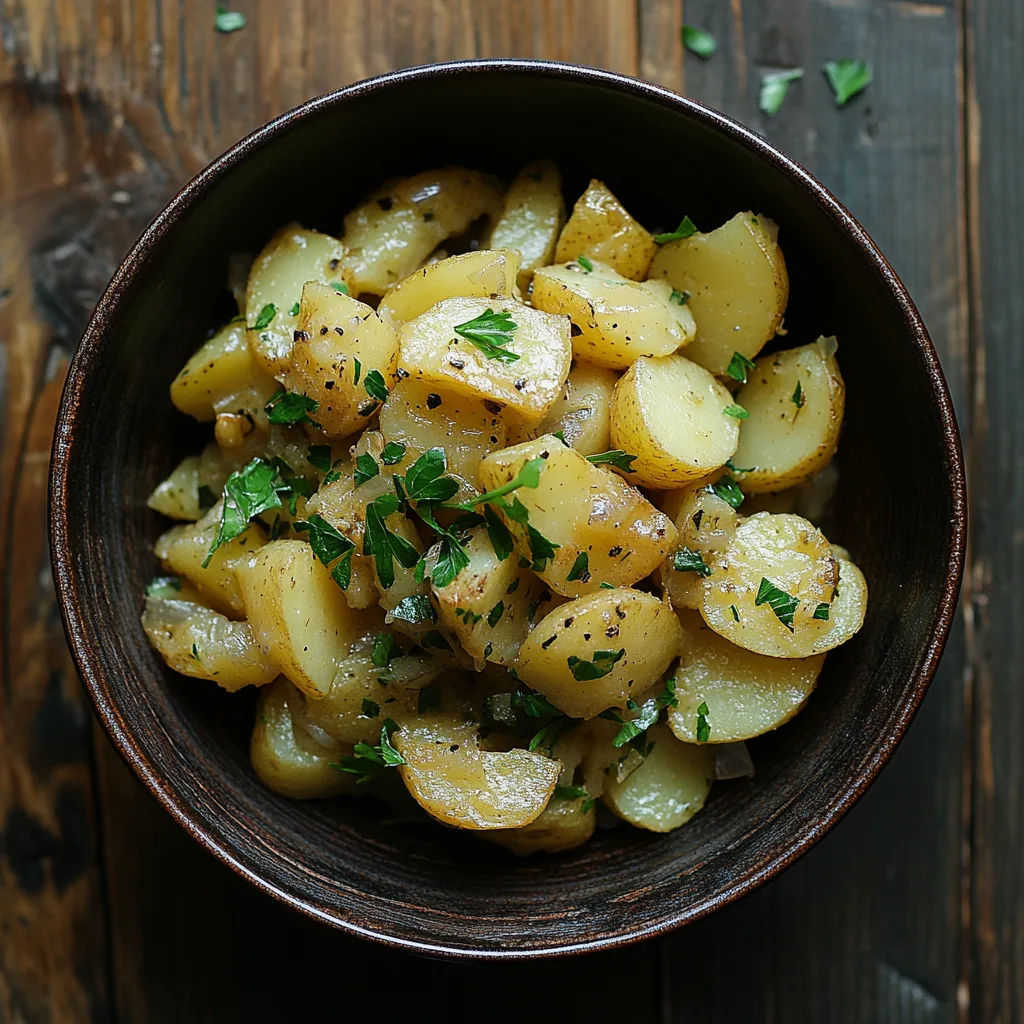
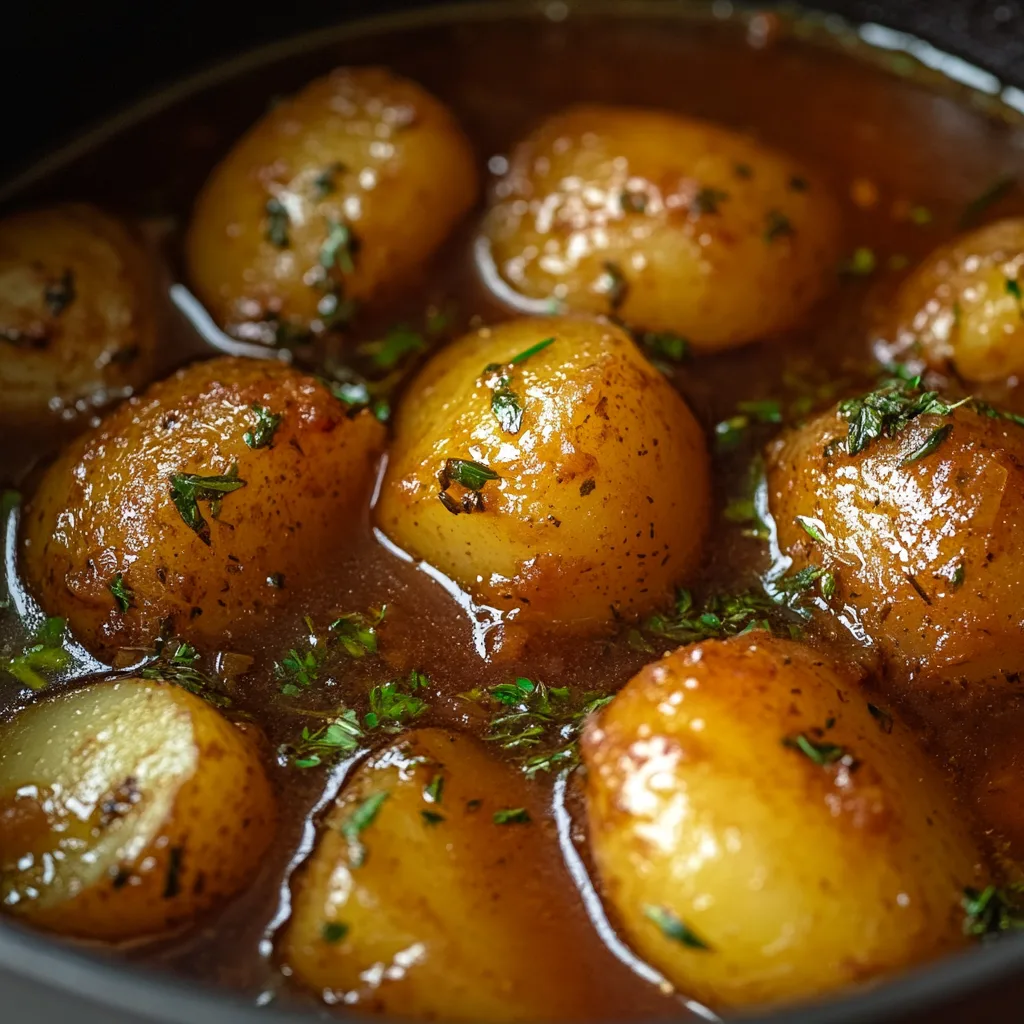
Stewed Potatoes
Ingredients
Method
- Sauté Aromatics:In a large pot, heat the olive oil over medium heat. Add the chopped onion and minced garlic. Sauté for about 5 minutes, until the onions are translucent and fragrant.
- Combine Vegetables:Add the sliced carrots and cook for an additional 3 minutes, allowing the vegetables to soften and release their flavors.
- Incorporate Broth and Potatoes:Pour in the chicken or vegetable broth, followed by the cubed potatoes, thyme, and paprika. Stir everything well and season with salt and pepper to taste.
- Bring to a Simmer:Increase the heat to bring the mixture to a boil. Then, reduce the heat to low and cover the pot. Let it simmer for 20-25 minutes, or until the potatoes are tender and easily pierced with a fork.
- Adjust Seasoning:Stir the stew and taste it again. Adjust the seasoning as needed. For a thicker consistency, add a slurry of flour mixed with a little cold water in the last few minutes of cooking.
- Final Touches:Garnish with fresh herbs like parsley or a squeeze of lemon juice right before serving.
Notes
-
Potato Variety:
While Yukon Gold and Red potatoes are ideal for stewing, you can experiment with other waxy potatoes, like Fingerling or new potatoes, which hold their shape and provide a creamy texture. Avoid starchy potatoes like Russets as they tend to break down too much during cooking. -
Broth Choice:
Low-sodium chicken or vegetable broth is recommended to control the amount of sodium in the dish. You can make your own broth or use store-bought. If using store-bought, always check for sodium levels and adjust seasoning accordingly. -
Adjusting Consistency:
If you prefer a thicker stew, you can mash a portion of the potatoes with a fork after cooking, or use a slurry of flour mixed with a little cold water and added towards the end of cooking to thicken the broth. You can also add a touch of heavy cream or milk if you desire a richer consistency, though it will increase the calorie content. -
Seasoning Adjustments:
Always taste your stew before serving and adjust the seasoning. Add more salt or pepper as needed. Fresh herbs like parsley, thyme, or rosemary can be used for a vibrant finish. A squeeze of lemon juice or a dash of vinegar can also brighten the dish and balance the richness. -
Serving Suggestions:
Serve your stewed potatoes in individual bowls for a rustic, comforting presentation. Pair them with crusty bread to soak up the delicious broth, or serve alongside a crisp, light salad (like arugula or mixed greens) to balance the richness of the potatoes. -
Vegetable Variations:
Stewed potatoes are a great base for adding other vegetables. Consider adding peas, bell peppers, green beans, or butternut squash for more flavor and color. These vegetables can be added in the last 10-15 minutes of cooking, depending on their cooking time. -
Health Considerations:
Stewed potatoes are a nutritious dish, especially when made with minimal added fats and plenty of vegetables. They are high in vitamins and minerals, including Vitamin C, B6, and potassium, which are beneficial for heart health and overall wellness. For a lower-fat version, use olive oil or other healthy fats, and opt for a lower-calorie broth. -
Make Ahead and Leftovers:
Stewed potatoes can be made ahead of time and stored in the fridge for up to 3-4 days. They actually improve in flavor after sitting for a day or two! You can also freeze leftovers for up to 1-2 months, though the texture of the potatoes may change slightly upon reheating. Reheat on the stovetop over low heat, adding extra broth or water if necessary to restore the consistency. -
Dietary Modifications:
- Vegetarian/Vegan: Use vegetable broth and omit any meat-based broths or additions like shredded chicken.
- Gluten-Free: Ensure you are using a gluten-free broth, and if adding flour to thicken, use a gluten-free flour like cornstarch or rice flour.
- Low Sodium: Use homemade broth or low-sodium store-bought broth and adjust salt to your taste to keep the dish lower in sodium.
What Goes Well with Stewed Potatoes?
Stewed potatoes are incredibly versatile. They can amplify a variety of dishes, enhancing flavors and adding nourishing elements to your plate. Let’s explore some mouthwatering flavor combinations and creative serving ideas that allow this dish to shine.
Flavor Pairings
The flavor of stewed potatoes can evolve dramatically depending on the ingredients you choose to incorporate. For instance, classic herbs like thyme, rosemary, and garlic offer timeless additions. Thyme’s earthy touch complements the potato’s natural sweetness beautifully. Fresh garlic can create an aromatic base that enhances all other flavors, adding an aromatic depth that beckons your taste buds.
Moreover, you might consider adding spices to boost the flavor profile of your stewed potatoes. Smoked paprika, for example, provides a warm, smoky essence that instantly elevates the dish. Just a pinch can transform a simple stewed potato into something groundbreaking. Additionally, incorporating vegetables such as carrots, bell peppers, or peas offers you both flavor and visual appeal, making your dish colorful and vibrant.
Savory Pairings
Stewed potatoes are known for their compatibility with various main courses. Think of enjoying them with a savory roast chicken, the crispy skin providing a delightful contrast to the soft potatoes. Alternatively, opt for grilled meats like sausages or lamb chops, where the hearty flavors beautifully complement the mildness of the potatoes.
If you lean toward plant-based options, consider pairing stewed potatoes with rich vegetable curries or ratatouille. Both dishes provide dynamic tastes that work harmoniously alongside the comfort of stewed potatoes. Ultimately, the key is to align the heartiness of the meal with the creamy nature of the potatoes for optimal satisfaction.
Creative Serving Suggestions
When serving stewed potatoes, presentation can enhance the overall experience. For instance, why not serve them in a rustic dish topped with fresh parsley or chives? This not only beautifies your plate but also adds freshness. Coupling stewed potatoes with a slice of crusty artisanal bread for dipping elevates the comfort level of your meal tremendously.
Additionally, a vibrant side salad with a zesty vinaigrette offers a lovely contrast to the rich flavors. A mix of greens with a tangy dressing can brighten the palate and create a balanced meal. Such thoughtful pairings make stewed potatoes not just a side dish but also a centerpiece of your dining experience.
Are Stewed Potatoes Good for You?
Let’s shift our focus to another important aspect: the health benefits of stewed potatoes. Many people ask if they should include stewed potatoes in their meals. The answer is yes! These starchy vegetables are wholesome and nutritious when prepared correctly.
Nutritional Benefits
Stewed potatoes are packed with essential nutrients. They are a great source of vitamins C and B6, potassium, and dietary fiber. Vitamin C aids in collagen formation, while B6 plays a role in metabolism. When combined with fiber, these nutrients can help improve your digestive health. Additionally, fiber contributes to a feeling of fullness, which can assist with weight management.
Another benefit is the potassium content found in potatoes. This mineral helps regulate blood pressure, which is essential for overall heart health. A single serving of stewed potatoes can therefore provide a significant boost to your daily nutritional intake while being incredibly satisfying.
Cooking Methods
The cooking method of stewing promotes health benefits as well. Stewing involves a gentle simmering process in broth or water, which preserves the nutrients that may otherwise leach away during frying or boiling. Plus, when you keep the skins on (when possible), you increase the fiber content, making your dish even healthier.
To create a wholesome bowl of stewed potatoes, consider using low-sodium broth and incorporating plenty of herbs and spices instead of creamy additions. This approach reduces calories and unhealthy fats while consistently delivering flavor. As you prepare stewed potatoes, remember that they can be a part of a balanced diet when prepared in a health-conscious way.
What Potatoes Are Best for Stewing?
Selecting the right type of potato is crucial for achieving the perfect stewed potatoes. Different varieties yield different flavors and textures, making this decision immensely important for your dish’s overall success.
Ideal Potato Varieties
For stews, waxy or all-purpose potatoes are your best choices. Yukon Gold and Red potatoes are particularly favored for their creamy textures when cooked. Their firm consistency allows them to hold shape while absorbing the rich flavors of the stew, creating a satisfying dish.
Conversely, starchy potatoes, such as Russets, can become mushy and lose their integrity if stewed. While they are excellent for mashed potatoes or fries, they may not be suited for your stewing needs. By opting for Yukon Gold or other similar varieties, you ensure a harmonious balance of flavor, texture, and visual appeal in your dish.
Texture and Flavor
The texture of your stewed potatoes can significantly affect your meal. Waxy potatoes provide a smooth, creamy mouthfeel, while starchy potatoes might break down more easily, leading to a thicker sauce but a grainy texture. For a well-rounded stewed potato dish, using a combination of different potato varieties may yield the best results. Mixing the firmness of waxy potatoes with the creaminess of a more starchy type creates layers of flavor and texture in your stew.
Besides, you can elevate these textures further by including additional vegetables. Carrots, peas, or bell peppers not only contribute varied flavors but also add vibrant colors to your stew. In due time, as you experiment with combinations, you may discover unique blends that perfectly suit your palate.
Seasonality and Sourcing
Selecting fresh, seasonal potatoes can also significantly enhance your stew’s quality. Fresh potatoes not only taste better but also provide improved functionality during cooking. When you shop at local farmers’ markets, you often find fresher varieties free from preservatives.
Consider trying different potato types depending on the season. For instance, newer potatoes with thin skins are perfect for stewing during summer. The flavor is lighter and fresher. Conversely, in the colder months, sturdier winter varieties offer a heartier flavor. Sourcing your potatoes seasonally allows you to enjoy their full flavor potential while supporting local agriculture.

Do You Put Flour in Stewed Potatoes?
You might wonder if adding flour to stewed potatoes is advisable. The answer is nuanced, as the decision to add flour offers both benefits and considerations.
Thickening Agents
Flour is often used as a thickening agent in stews. However, it may not always be necessary for stewed potatoes. Opting to add flour can enhance the dish’s consistency, creating a rich and creamy texture. You might also choose gluten-free alternatives, like cornstarch, which works fantastically when mixed with a little cold water before incorporating it into your stew.
One actionable tip is to create a roux—a mixture of flour and fat—before introducing it into your stew. Start by heating a tablespoon of oil in a pan, adding the flour, and cooking it until golden brown. This step not only binds the ingredients together smoothly but also develops a deeper flavor profile for your stew.
Flavor Considerations
While thickening can enhance your stew, it can also slightly mute the vibrancy of your other ingredients. If you decide to add flour, balance it by ensuring you use plenty of bold seasonings and herbs to maintain the dish’s flavor. Keep stirring as you add it, which helps prevent clumping and gives you a uniform texture.
Additionally, consider adding other ingredients that contribute to thickness. For example, mashing a few pieces of stewed potatoes can integrate their starchiness into the stew naturally, thickening it without additional flour. This method intensifies the potato flavor, making your dish even more delightful.
When to Use Flour
If you choose to use flour in your recipe, make sure to add it early in the cooking process. Mixing it with oil or butter in a separate pan before combining it with your broth will help create a well-blended mixture. Once added, allow the stew to simmer gently. This will help ensure both the texture and flavors meld beautifully.
Overall, adjusting the incorporation of flour is a personal choice based on the texture and richness you desire. As you experiment, you’ll find what works perfectly for your palate and dining preferences.
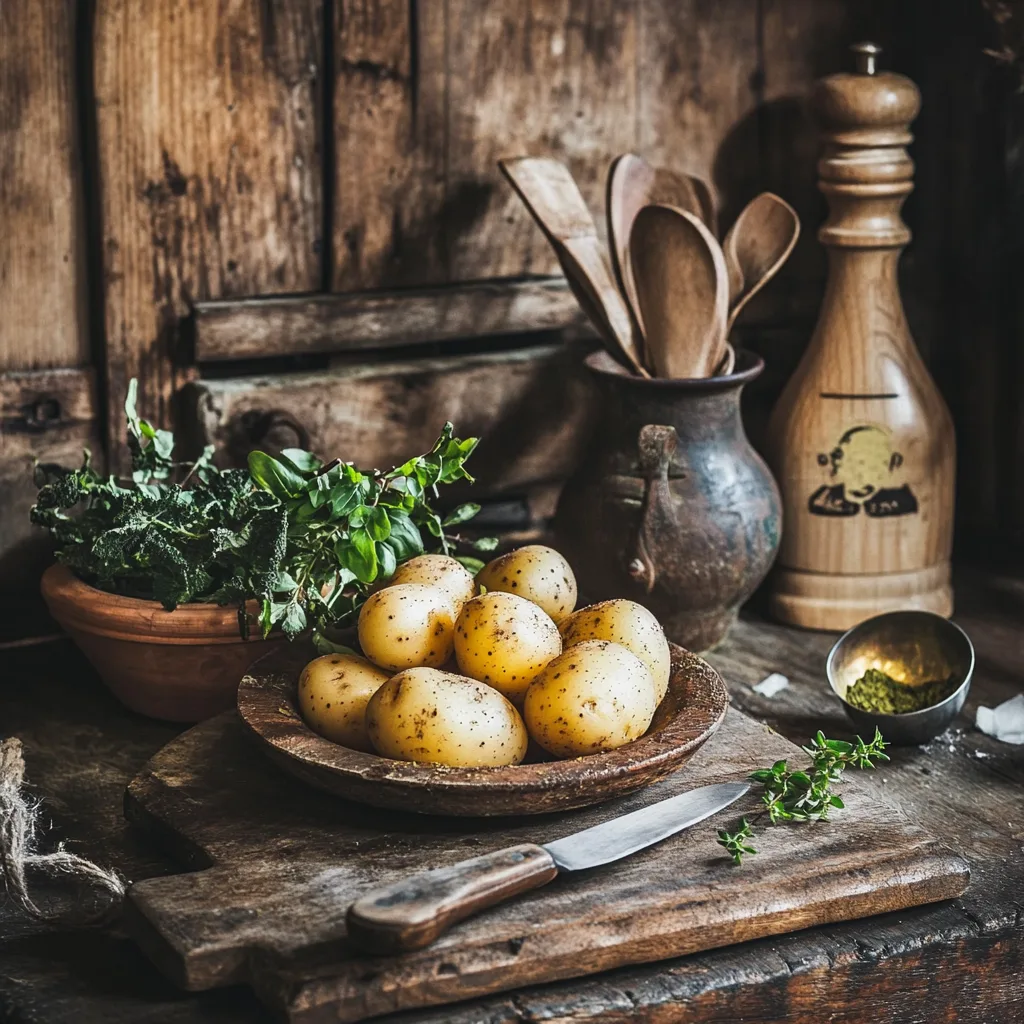
Ingredients and Instructions for Stewed Potatoes
As we explore the world of stewed potatoes, let’s dive into a delicious and straightforward recipe. This recipe balances simplicity with robust flavors, making it perfect for any home cook.
Ingredients List
| Ingredient | Amount | Notes |
|---|---|---|
| Potatoes (Yukon Gold or Red) | 2 lbs | Peeled and cubed |
| Chicken or Vegetable Broth | 4 cups | For a depth of flavor |
| Onion | 1 medium | Chopped |
| Garlic | 4 cloves | Minced |
| Carrots | 2 medium | Sliced |
| Olive Oil | 2 tablespoons | For sautéing |
| Thyme | 1 teaspoon | Fresh or dried |
| Paprika | 1 teaspoon | Smoked or regular |
| Salt | To taste | |
| Pepper | To taste |
Table of Contents
Instructions
- Sauté Aromatics: Begin by heating the olive oil in a large pot over medium heat. Add the chopped onion and minced garlic. Sauté for about five minutes, until the onions turn translucent and fragrant. This step sets the stage for a flavorful stew.
Combine Vegetables: Next, add the sliced carrots. Cook for an additional three minutes, allowing the vegetables to soften slightly and release their intrinsic flavors. You’ll notice the scent becoming more inviting.
Incorporate Broth and Potatoes: Pour in the chicken or vegetable broth, followed by the cubed potatoes, thyme, and paprika. Stir everything, and don’t forget to season with salt and pepper to your taste. These seasonings emphasize the natural flavors of the potatoes while enhancing the overall taste.
Bring to a Simmer: Increase the heat to bring your stew to a gentle boil. Then, reduce the heat to low and cover the pot. Allow it to simmer for 20-25 minutes, or until the potatoes are tender enough to pierce with a fork. This slow cooking process allows flavors to meld beautifully.
Adjust Seasoning: After simmering, give the stew a good stir and taste it again. Adjust seasoning as needed, enhancing flavors where necessary. If you prefer a thicker consistency, consider adding a slurry of flour during the last minutes of cooking.
Throughout these steps, pay attention to the texture of the potatoes. You want them to be tender but still holding their shape. This endearing quality is essential—it enhances your overall eating experience. Remember, every pot of stewed potatoes can be a canvas for creativity. Feel free to incorporate additional vegetables or spices according to your taste preferences.
How to Make Stewed Potatoes Step-by-Step (continued)
As we continue our journey in making the perfect stewed potatoes, it’s essential to focus on the finishing touches, serving techniques, and variations that can enhance this comforting dish. Stewed potatoes are versatile and can easily adapt to your taste preferences and the season. Let’s dive deeper into each aspect of cooking stewed potatoes, ensuring that your dish turns out delicious and satisfying.
6. Final Touches to Your Stewed Potatoes
After your stewed potatoes have been simmering and reached the desired tenderness, it’s time to bring everything together with final adjustments. At this stage, taste your stew to determine if additional seasoning is necessary. You might find that a pinch of salt or a dash of pepper enhances the flavors more than you expected. Remember, seasoning is an important balance in cooking, and adjusting it at the end ensures you achieve the best flavor profile.
It’s also important to think about incorporating herbs into your dish. Adding chopped fresh herbs such as parsley or cilantro right before serving can elevate your stewed potatoes considerably. These fresh herbs introduce a burst of color and a refreshing taste that beautifully contrasts with the warm, hearty flavors of the stew.
Furthermore, don’t shy away from using acidity to brighten your dish. A splash of lemon juice or a dash of vinegar can cut through the richness and lend a lively touch to your stewed potatoes. Fresh herbs and a hint of acid together create a balance that enhances your eating experience and makes every bite enjoyable.
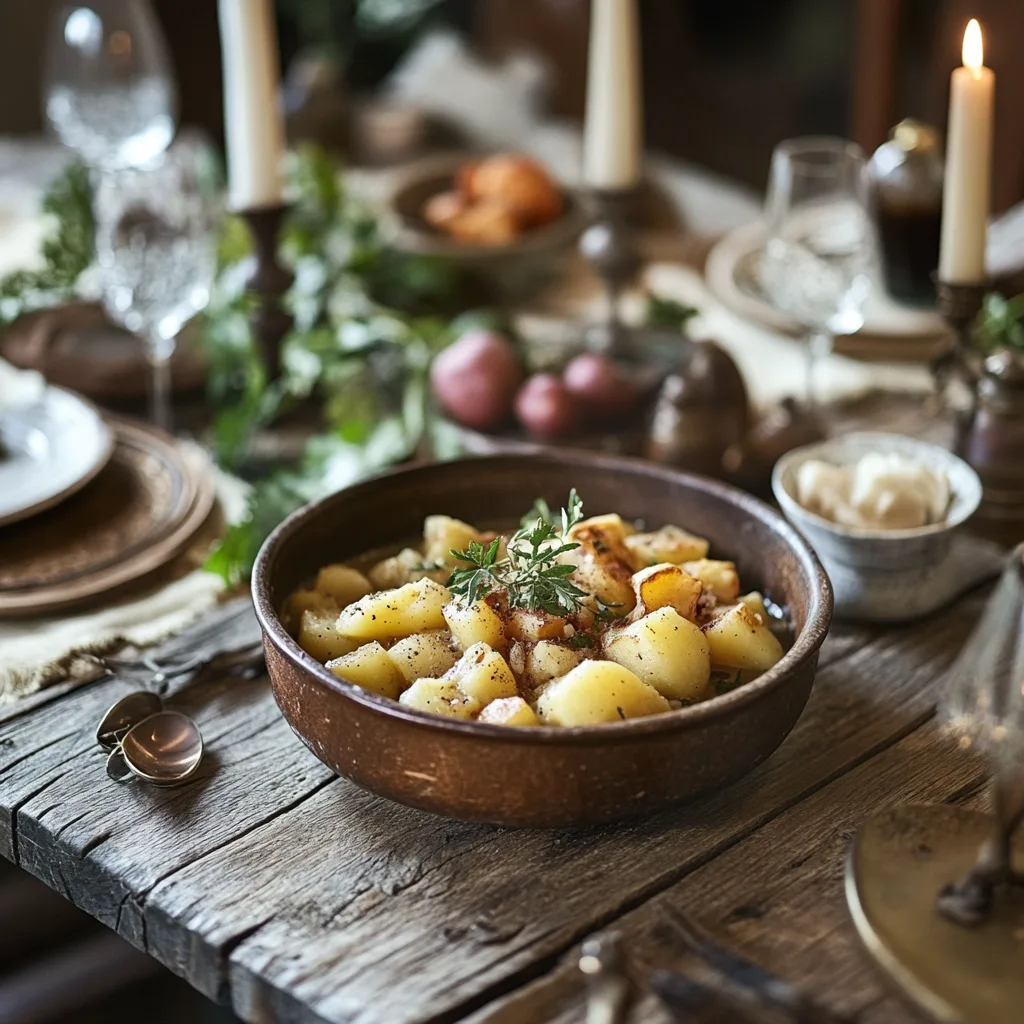
7. Serving Your Stewed Potatoes
How you serve stewed potatoes can greatly impact the dining experience. To start, ladle generous portions of stewed potatoes into warm bowls. Ensure that each serving has a well-distributed mix of broth, potatoes, and any vegetables you included. If you want to make it visually appealing, consider garnishing with freshly chopped herbs or a generous sprinkle of paprika, which adds a lovely color contrast and a hint of spice.
Consider using individual serving dishes, such as small cast iron pots or ramekins, for a charming presentation. This not only enhances the visual appeal but also provides a cozy, rustic feel to your meal. Plus, serving in individual portions can make the dining experience feel more special.
Another approach is to serve stewed potatoes alongside crusty bread. This way, your guests can savor the rich broth by soaking it up with the bread, making each bite even more delightful. Moreover, pairing your stew with a light, crisp side salad—such as a simple arugula salad dressed with lemon vinaigrette—can balance the hearty nature of the potatoes, providing a refreshing contrast and enhancing the overall meal.
8. Pro Tips and Variations
To truly create a memorable dish, it can be advantageous to explore various adaptations and enhancements for your stewed potatoes. Below are some practical tips and exciting variations you can try to elevate your recipe beyond the traditional.
Pro Tips
- Experiment with Potato Varieties: Although Yukon Gold and Red potatoes are frequently recommended, combining them with other varieties can yield fantastic results. Attempt mixing in some sweet potatoes for added depth and a touch of sweetness. The contrast in flavors can surprise and delight those who taste it.
Incorporate Proteins: To transform your stewed potatoes into a complete meal, consider adding proteins. Shredded rotisserie chicken, beef chunks, or hearty legumes, like chickpeas or lentils, can enrich the stew and increase its nutritional value. For example, adding shredded chicken during the last 10 minutes of cooking allows the flavors to meld without overcooking the protein.
Use Seasonal Ingredients: Tailor your stew by utilizing seasonal vegetables. For instance, in the fall, consider adding butternut squash or parsnips for a sweet earthiness. In spring, fresh peas or young carrots can introduce a delightful crunch and seasonal freshness to your dish.
Don’t Hold Back on Spices: While stewed potatoes are comforting, introducing spices can elevate their flavor dramatically. Upon tasting, consider adding a pinch of cumin or coriander for warmth or red pepper flakes for a bit of heat. This experimentation can turn your pot of stewed potatoes into a sensational dish that keeps everyone coming back for more.
Creative Serving Suggestions
To make your stewed potatoes visually appealing, consider various serving suggestions that enhance the overall meal experience. Here are a few ideas to inspire your presentation:
- Individual Pots: Serve stewed potatoes in individual cast iron pots for a charming rustic presentation. This method brings warmth and style to your table while keeping the potatoes warm longer.
Mashed Potato Stew: Instead of only cubing potatoes, mash a portion of them before combining them with whole cubes. This creates a creamy base for your stew, enhancing texture and flavor.
Curated Toppings: Offer an array of toppings for your guests to choose from. Consider crumbled bacon, shredded cheese, or a dollop of sour cream to allow for personalization. Each addition adds a new layer of flavor and texture to the dish.
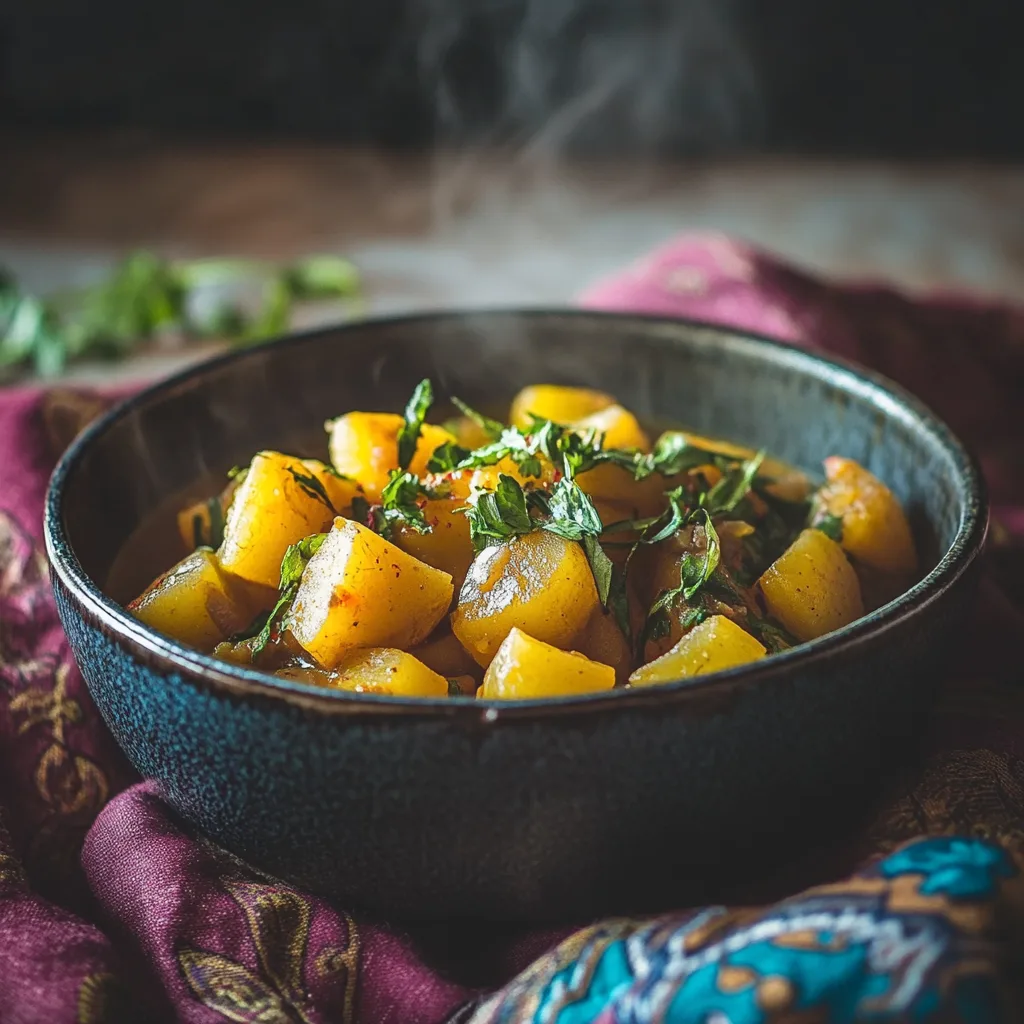
FAQs About Stewed Potatoes
What Goes Well with Stewed Potatoes?
As mentioned in the previous sections, stewed potatoes harmonize beautifully with a variety of dishes. They make an excellent companion for roast meats, especially flavorful cuts like a roast chicken or pork. Furthermore, they can also pair greatly with grilled vegetables or fresh salads. For a lighter touch, consider pairing with simple roasted asparagus or crispy Brussels sprouts.
Are Stewed Potatoes Good for You?
Absolutely! Stewed potatoes offer a trove of health benefits when prepared thoughtfully. They are rich in essential vitamins and minerals, notably vitamin C, potassium, and dietary fiber, which can contribute to overall heart health. Moreover, when made with low-sodium broth and plenty of fresh vegetables, stewed potatoes can be a wholesome and satisfying addition to your diet.
What Potatoes Are Best for Stewing?
For the best results, focusing on waxy or all-purpose potatoes is key. Suitable options include Yukon Gold, red-skinned potatoes, and even fingerlings, as they provide a creamy texture while holding their shape during cooking. Avoid starchy potatoes, like Russets, as they tend to break down too much, resulting in a gummier texture.
Do You Put Flour in Stewed Potatoes?
While adding flour is optional, it can serve as an effective thickening agent for your stew. If one prefers a creamier consistency, mixing a tablespoon of flour with broth to avoid clumping can help achieve a luxurious texture without overpowering the potatoes’ flavors. Always remember to stir well to incorporate any thickening agent thoroughly into the stew.
How Long to Cook Stewed Potatoes?
The ideal cooking time for stewed potatoes typically ranges from 20 to 30 minutes, depending on the size of your potato chunks. You can conduct a simple fork test—if a fork easily pierces through the potato, they are cooked. By monitoring the timing closely, you can achieve that perfect texture.
Can You Freeze Stewed Potatoes?
You can freeze stewed potatoes, but consider that their texture may change slightly. To maintain quality, aim to consume your stew within one to two months of freezing. When reheating, doing so slowly on your stovetop will help preserve their flavor and texture better than the microwave.
What Herbs Pair Well with Stewed Potatoes?
Many herbs complement stewed potatoes wonderfully. Popular options include fresh thyme, rosemary, and parsley, which can enhance their natural taste through aromatic contributions. Consider also using bay leaves during cooking for added depth and complexity.
Are Sweet Potatoes Suitable for Stewing?
Yes, sweet potatoes can be a delightful alternative to the standard varieties. Their natural sweetness adds a lovely contrast for savory flavors. Be mindful, however, that sweet potatoes cook more quickly than regular ones, so add them after the regular potatoes well into the cooking process to ensure they don’t overcook.
Conclusion
Stewed potatoes are a comforting and versatile dish that serves as a canvas for creativity in the kitchen. They blend beautifully with various flavors, making them suitable for any meal, from hearty family dinners to comforting side dishes. Throughout this guide, we’ve covered everything from choosing the right potatoes and preparing the stew to presenting it attractively. By applying the tips and techniques outlined here, you can create a delicious pot of stewed potatoes that will warm hearts and satisfy appetites. Embrace the flavors and enjoy this comforting dish, knowing that it will leave a lasting impression at your dining table.


